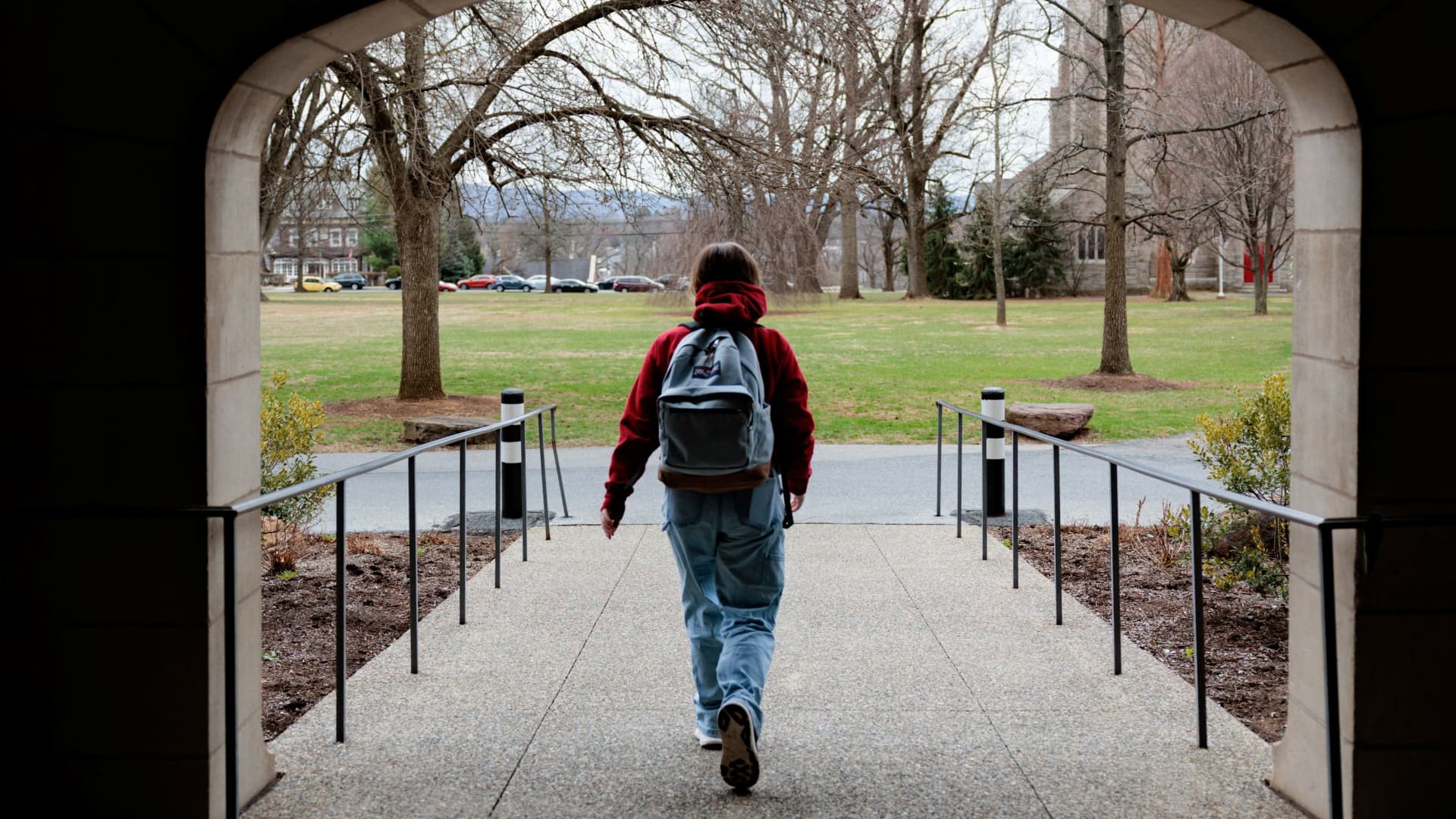The Federal Reserve could start lowering interest rates as soon as next month, based on the latest inflation data.
“We think that the time is approaching,” Fed Chair Jerome Powell said at a press conference after the last Federal Open Market Committee meeting in July.
For Americans struggling to keep up with sky-high interest charges, a likely September rate cut may bring some welcome relief — even more so with the right planning.
“If you are a consumer, now is the time to say: ‘What does my spending look like? Where would my money grow the most and what options do I have?'” said Leslie Tayne, an attorney specializing in debt relief at Tayne Law in New York and author of “Life & Debt.”
More from Personal Finance:
‘Emotion-proof’ your portfolio ahead of the election
‘Recession pop’ is in: How music hits on economic trends
More Americans are struggling even as inflation cools
Fed officials signaled they expect to reduce the benchmark rate once in 2024 and four times in 2025.
That could bring the benchmark fed funds rate from the current range of 5.25% to 5.50% to below 4% by the end of next year, according to some experts.
The federal funds rate is the one at which banks borrow and lend to one another overnight. Although that’s not the rate consumers pay, the Fed’s moves still affect the rates they see every day on things such as private student loans and credit cards.
Here are five ways to position your finances for the months ahead:
1. Lock in a high-yield savings rate
Since rates on online savings accounts, money market accounts and certificates of deposit are all poised to go down, experts say this is the time to lock in some of the highest returns in decades.
For now, top-yielding online savings accounts are paying more than 5% — well above the rate of inflation.
Although those rates will fall once the central bank lowers its benchmark, a typical saver with about $8,000 in a checking or savings account could earn an additional $200 a year by moving that money into a high-yield account that earns an interest rate of 2.5% or more, according to a recent survey by Santander Bank in June. The majority of Americans keep their savings in traditional accounts, Santander found, which FDIC data shows are currently paying 0.45%, on average.
Alternatively, “now is a great time to lock in the most competitive CD yields at a level that is well ahead of targeted inflation,” said Greg McBride, chief financial analyst at Bankrate.com. “There is no sense in holding out for better returns later.”
Currently, a top-yielding one-year CD pays more than 5.3%, according to Bankrate, as good as a high-yield savings account.
2. Pay down credit card debt
With a rate cut, the prime rate lowers, too, and the interest rates on variable-rate debt — most notably credit cards — are likely to follow, reducing your monthly payments. But even then, APRs will only ease off extremely high levels.
For example, the average interest rate on a new credit card today is nearly 25%, according to LendingTree data. At that rate, if you pay $250 per month on a card with a $5,000 balance, it will cost you more than $1,500 in interest and take 27 months to pay off.
If the central bank cuts rates by a quarter point, you’ll save $21 and be able to pay off the balance one month faster. “That’s not nothing, but it is far less than what you could save with a 0% balance transfer credit card,” said Matt Schulz, chief credit analyst at LendingTree.
Rather than wait for a small adjustment in the months ahead, borrowers could switch now to a zero-interest balance transfer credit card or consolidate and pay off high-interest credit cards with a personal loan, Tayne said.
3. Consider the right time to finance a big purchase
If you’re planning a major purchase, like a home or car, then it may pay to wait, since lower interest rates could reduce the cost of financing down the road.
“Timing your purchase to coincide with lower rates can save money over the life of the loan,” Tayne said.
Although mortgage rates are fixed and tied to Treasury yields and the economy, they’ve already started to come down from recent highs, largely due to the prospect of a Fed-induced economic slowdown. The average rate for a 30-year, fixed-rate mortgage is now around 6.5%, according to Freddie Mac.
Compared to a recent high of 7.22% in May, today’s lower rate on a $350,000 loan would result in a savings of $171 a month, or $2,052 a year and $61,560 over the lifetime of the loan, according to calculations by Jacob Channel, senior economic analyst at LendingTree.
However, going forward, lower mortgage rates could also boost homebuying demand, which would push prices higher, McBride said. “If lower mortgage rates lead to a surge in prices, that’s going to offset the affordability benefit for would-be buyers.”
What exactly will happen in the housing market “is up in the air” depending on how much mortgage rates decline in the latter half of the year and the level of supply, according to Channel.
“Timing the market is virtually impossible,” he said.
4. Consider the right time to refinance
For those struggling with existing debt, there may be more options for refinancing once rates drop.
Private student loans, for example, tend to have a variable rate tied to the prime, Treasury bill or another rate index, which means once the Fed starts cutting interest rates, the rates on those private student loans will come down as well.
Eventually, borrowers with existing variable-rate private student loans may also be able to refinance into a less expensive fixed-rate loan, according to higher education expert Mark Kantrowitz.
Currently, the fixed rates on a private refinance are as low as 5% and as high as 11%, he said.
However, refinancing a federal loan into a private student loan will forgo the safety nets that come with federal loans, he added, “such as deferments, forbearances, income-driven repayment and loan forgiveness and discharge options.” Additionally, extending the term of the loan means you ultimately will pay more interest on the balance.
Be mindful of potential loan -term extensions, cautioned David Peters, founder of Peters Professional Education in Richmond, Virginia. “Consider maintaining your original payment after refinancing to shave as much principal off as possible without changing your out-of-pocket cash flow,” he said.
Similar considerations may also apply for home and auto loan refinancing opportunities, depending in part on your existing rate.
5. Perfect your credit score
Those with better credit could already qualify for a lower interest rate.
When it comes to auto loans, for instance, there’s no question inflation has hit financing costs — and vehicle prices — hard. The average rate on a five-year new car loan is now nearly 8%, according to Bankrate.
But in this case, “the financing is one variable, and it’s frankly one of the smaller variables,” McBride said. For example, a reduction of a quarter percentage point in rates on a $35,000, five-year loan is $4 a month, he calculated.
Here, and in many other situations, as well, consumers would benefit more from paying down revolving debt and improving their credit scores, which could pave the way to even better loan terms, McBride said.


 Economics1 week ago
Economics1 week ago
 Accounting1 week ago
Accounting1 week ago
 Economics1 week ago
Economics1 week ago
 Economics1 week ago
Economics1 week ago
 Personal Finance1 week ago
Personal Finance1 week ago
 Economics1 week ago
Economics1 week ago
 Personal Finance1 week ago
Personal Finance1 week ago
 Finance1 week ago
Finance1 week ago













